Posted on The Edvocate
A guest post by Frank Britt, CEO of Penn Foster
Education is the catalyst for bottom-up change and can become the epicenter of transformation for communities. With a high school diploma, at-risk youth can be armed with academic pedigree, are far more attractive professionals and have better social and civic skills. This milestone creates a catalyst for driving personal and communal change. Educate our youth, and our communities will flourish.
What Drives (and Improves) Economic and Productivity Growth in a Community?
States that invest in k-12 education help build a strong foundation for economic success and prosperity, according to the 2013 Economic Analysis and Research Network report, “A Well-Educated Workforce Is Key to State Prosperity.”
Education is the cornerstone to providing people from disadvantaged backgrounds with decent healthcare and sufficient nutrition, the report found. Education also equates to greater productivity. Economic Policy Institute analysis found that between 1979 and 2007, states with greater productivity also had increased median worker compensation, thus supporting the strong link between productivity and education. In other words, giving workers access to high-quality education strengthens the economic infrastructure of a state—the effect on local communities is no different.
High school diplomas are commonly the jumping-off point to such improvements, as is continuing education to cultivate a skilled and productive workforce. Education boosts productivity and redistributes the increased earnings into higher wages for workers.
What Drives (and Improves) Poverty and Income Inequality in a Community?
Income inequality and poverty-stricken households significantly influence the demise of a local community. And a low-income community driven by under-educated individuals actually perpetuates this chronic cycle of fiscal depression. This a primary reason that the U.S. economy is growing but the traditional “all boats will rise” prosperity phenomena has not happened is because millions of people exist outside the economic mainstream and lack the skills and opportunity to exploit this middle-skills labor gap moment.
Combating poverty with initiatives to lower high school dropout rates is an essential ingredient, according to John Bridgeland in his article “Fight Poverty: Lower High School Dropout Rates.” Without high school completion, young people experience higher unemployment rates and rates of receiving public assistance, going to prison, divorcing and becoming single parents—all catalysts for a life and community plagued by poverty. Poverty is cyclical, yet academic options specifically designed to meet the unique needs of these low-income individuals can break the treacherous cycle.
Dropout prevention and high school completion programs designed to meet the specific needs and challenges of the nontraditional student (such as hybrid learning models) can help raise high school graduation rates and make both secondary education or career opportunities more viable.
The Time Is Now
Poverty and income inequality are combustible forces that can destroy families, corrupt communities and harden society in countless ways. The good news is that the common vaccine to all these ailments is education, starting with a high school degree. More than 90 percent of jobs demand this credential to get a job, and the imperative for all stakeholders (students, parents, schools, businesses and government) is to build a cohesive plan of attack.
The high school diploma serves as the cornerstone to future citizens and our communities. If academic communities can collectively address educational crises by implementing both traditional and unconventional student solutions, we can foster higher economic returns, poverty mitigation, crime-free environments and enhanced civility.
